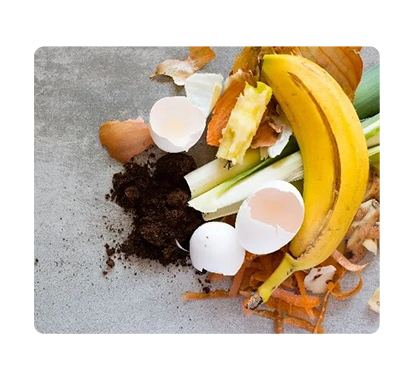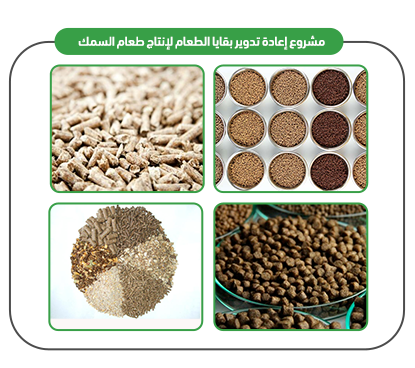The project of Recycling Food Waste for Producing Fish Feed intends to exploit food waste and leftovers from restaurants, hotels, and factories to produce fish feed. This process involves several phases, including: collecting food waste, extracting toxic substances, drying leftovers and shifting them into powder, and mixing food waste with other nutrients. The project significance lies in recycling food waste to produce fish feed. This process preserves natural resources, curbing greenhouse gas emissions, and reducing the food waste volume.

The project of Recycling Food Waste for Producing Fish Feed intends to exploit food waste and leftovers from restaurants, hotels, and factories to produce fish feed. This process involves several phases, including: collecting food waste, extracting toxic substances, drying leftovers and shifting them into powder, and mixing food waste with other nutrients. The project significance lies in recycling food waste to produce fish feed. This process preserves natural resources, curbing greenhouse gas emissions, and reducing the food waste volume.
Mashroo3k for Economic Consulting is pleased to provide specialized services to investors interested in investing in recycling food waste to produce fish feed by providing an analytical study that includes updated data and statistics of the project market, which gives our client a deep understanding of all the project aspects. Our study encompasses the following key areas: technical, financial, marketing, administrative, and environmental analysis which enable the project to capture its target market share.



Executive Summary
Project Service/Product Study
Market Size Study
Study of Risks
Technical Study
Financial Study
Regulatory and Administrative Study

Recently, the Kingdom of Saudi Arabia has turned to the recycling sector and has begun to discover the importance of this sector in achieving the goals of its Vision 2030 and its ability to drive the economy towards sustainable development. In 2017, we saw how SIRC, the Saudi Investment Recycling Company, was established with the support of the Crown Prince himself, in the hope of saving billions of riyals that are lost to the Kingdom’s treasury annually due to lack of interest in the recycling industries. This money was estimated at an approximate figure, falling between ( 30 billion riyals – 70 billion riyals). In order for our client to be reassured about investing in this sector, we will present here the most important indicators and results of the sector according to the latest statistics available to us: With conservative estimates, international reports indicate that Saudi Arabia produces 15 million tons annually of municipal solid waste at a rate of 1.4 kg per person. It is expected that this quantity will double until it reaches 30 million tons by 2033 AD. Driven by population growth of 3.4%. The amount of demolition and construction waste exceeded 14,399,005 tons. The amount of waste generated from textiles exceeded 959,535 tons. The amount of waste generated from glass is estimated at 892,096 tons. Metal waste in recent years has exceeded 1,096,754 tons. Waste resulting from plastic amounted to 2,296,978 tons. The amount of cardboard waste reaches 2,854,321 tons. Organic waste amounts are estimated at 9,757,544 tons. 406 landfills is the total number of waste landfills located on the Kingdom’s land.

“Mashroo3k” company confirms that the volume of waste in Saudi Arabia now exceeds 45 million tons annually. Because the Kingdom is determined to increase the recycling rate from 1% to 80% by 2035 AD, the company believes that investment in this vital sector will be highly profitable. Regarding the prospects for the recycling and energy industry, we can mention the following: In the Kingdom, we can save 45 thousand terajoules of energy by recycling glass and metal alone. Electricity of 3 TWh could be generated annually if all food waste in Saudi Arabia was used within the walls of biogas plants. We can generate electricity in the Kingdom of Saudi Arabia by 1 and 1.6 TWh per year if plastic and other mixed waste, such as: (paper, cardboard, wood, textiles, leather…etc.) are processed in pyrolysis processes. The “Mashroo3k” economic consulting and market research company confirms that recycling is one of the most promising sectors in the Kingdom and that its projects will be real opportunities for investment, especially after Saudi Arabia moved towards a green economy, and the environment and its preservation became a priority for the wise ruling leadership until this was clearly demonstrated in Vision 2030.